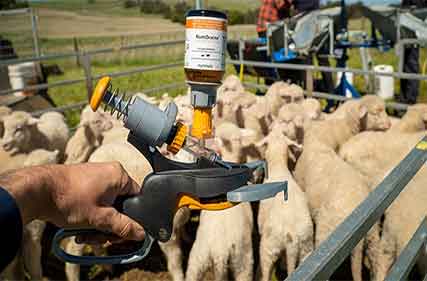 If you’re getting the cradles ready for this season’s lambs, here are a few tools and tricks you might want to try to maximise the health and performance of your lambs through the coming months.
If you’re getting the cradles ready for this season’s lambs, here are a few tools and tricks you might want to try to maximise the health and performance of your lambs through the coming months.
1. NumNuts
Using pain relief wherever possible when castrating and tail docking lambs can help protect your livestock during and after the procedure, while also helping you to meet consumer expectations around animal welfare.
The NumNuts tool is one pain relief option available for castrating and tail docking lambs.
This tool uses a handheld device to dispense a rubber ring while injecting local anaesthetic, NumOcaine®, to alleviate pain when lambs are marked. NumOcaine is available through your veterinarian.
If you don’t have a local vet that will prescribe NumOcaine, many veterinarians will do phone consultations and then post NumOcaine to your farm.
The NumNuts website provides information about how to find vets that prescribe NumOcaine, as well as a range of other information about the NumNuts tool.
2. Pre-operative treatments
Ideally, all lambs should be treated pre-operatively with Buccalgesic, or injectable Meloxicam, before tail docking and castration.
For more information on best practice castration or tail docking – including pre-operative pain relief for both procedures – view MLA’s factsheet on pain mitigation in sheep here.
3. Drenching at marking time
Conducting a WormTest on ewes 7–10 days before lamb marking is recommended to assess whether drenching of the flock is required when they are brought in for marking.
When results are back, you can view the WormBoss Drench Decision Guide for your region to see if drenching is required.
As a general rule, if the ewes need drenching, then also drench the lambs.
On properties facing drench resistance or high barber’s pole worm risk, the first BarberVax vaccination against Barber’s Pole can be given at lamb marking.
https://www.mla.com.au/news-and-events/industry-news/numnuts-and-other-tricks-for-the-best-lamb-marking-yet/
